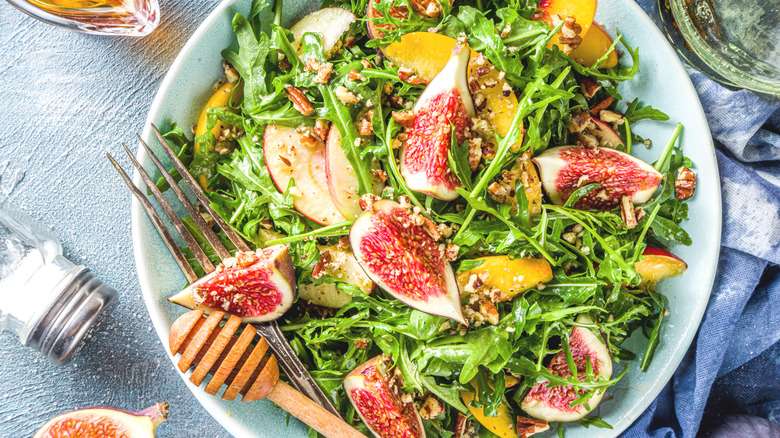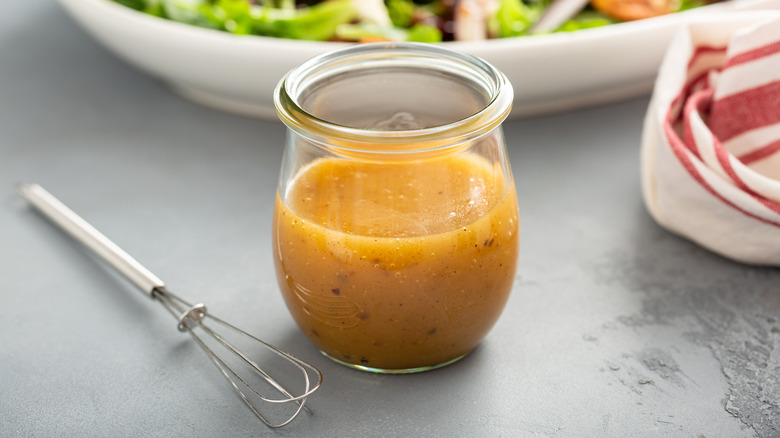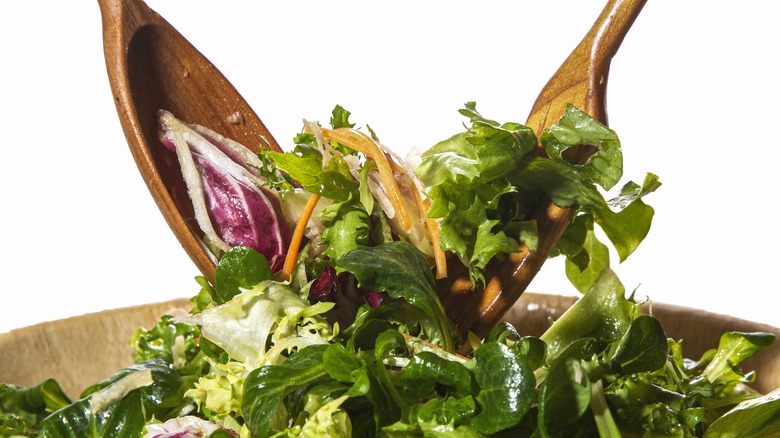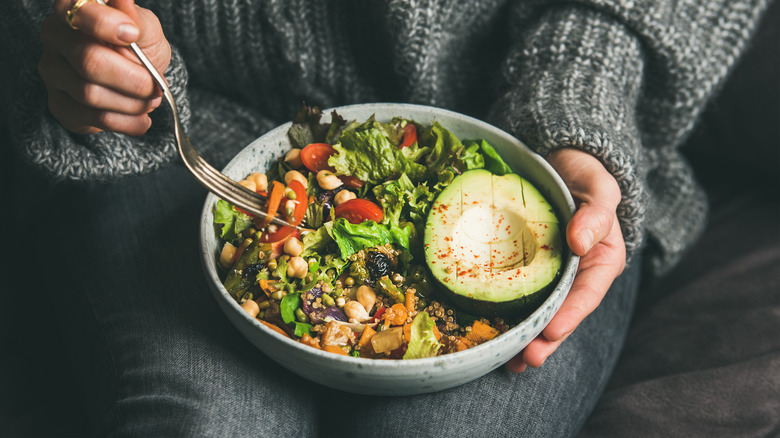Why Do Salads Taste Better From A Restaurant?
According to a 2022 survey, Americans on average eat four salads a week, but how many of those salads are made at home? Some of us might prefer to order our salads out or get them delivered for our lunch break — and justifiably so. Restaurants have a magical way of making delicious and satiating salads. While some might try to recreate their favorite salads at home, they often stand no chance of living up to those $15 Sweetgreen orders — which we'll surely be Uber Eats-ing if ours don't taste up to par.
But, what if they're not magical after all? What if we told you there is a way to enjoy restaurant-quality salads, get your daily fix of greens, and maybe save a little money? With just a few simple tips you can make your at-home salads taste just as good as — if not better than — the ones you order out.
The dressing ratio
The dressing is one of salad's most essential ingredients. Quick to whip up at home, if done right your salad dressing will taste 1,000 times better than anything you can get bottled at the store — much more like what you have probably come to expect from your favorite restaurant. However, if the ratio of ingredients in your dressing isn't quite right, no amount of toppings will keep your salad from falling flat.
Fortunately for at-home salad makers, most vinaigrette dressings use a standard ratio, per Bon Appétit: three parts oil to one part vinegar. Truthfully though, this is just a baseline and can be adjusted to accommodate different ingredients, as well as personal tastes. This customizability offers endless possibilities to build off of, allowing you to recreate your favorite dressings or invent your own. Get creative and play around with different oils, throw in fresh herbs, or mix in seasonings (may we even suggest a little vanilla?) — there's a world of salad dressing out there, and you can soon be living in it.
Season your greens
A good salad is always well-seasoned, and this shouldn't stop at the dressing. Most home cooks may not know this, but the way that chefs in restaurants get you to spend money on a salad you could easily make at home is by seasoning the greens. Cook's Illustrated explains that, after the greens are dressed and any other ingredients have been tossed around, many cooks add a touch of salt and pepper to salads to get the seasoning just right.
This might sound redundant after putting all that effort into perfecting your dressing (okay, it really wasn't that much effort), but the simple step of seasoning your salad makes a big impact. Seasoning after dressing and mixing will allow you to adjust the taste to fit each individual combo. Cook's Illustrated recommends using kosher or flaked salts for variety of flavor, giving you saltier bites throughout. The outlet explains these flaky salts pair particularly well with salads featuring nuts or sweet ingredients like berries. So next time you attempt to recreate your favorite overpriced restaurant greens, don't forget your trusty salt and pepper.
Embrace the fats
If you're choosing to eat a salad over the abundance of other, very tempting food options you could be eating instead you deserve to really enjoy it. There is nothing worse than suffering through a disappointing salad (throwing it out would be wasteful!) served alongside a mouthwatering main. One reason people enjoy restaurant salads more than the ones they make for themselves comes down to one thing: flavor. And where does so much flavor come from? The answer, according to the Kitchn, is probably not the first word you think of when eating a salad — fat.
Not only will embracing fats make your salads taste better, but there are a few nutritional perks to the addition as well. WebMD explains that fats have been shown to actually help our bodies absorb nutrients like lycopene and beta-carotene from vegetables. Naturally occurring fats (like those you're most likely to add to a salad) can also help keep you full for a longer amount of time, shares Healthline.
The best part is adding fat to your salad is ridiculously easy — in fact, fats are most likely already part of your favorite restaurant salads. Fat can be added through the dressing, or with ingredients like avocado, hummus, seeds, or nuts.
Armed with these salad tips, you'll be making restaurant-quality salads from the comfort of your own home from now on.



